Queen Anne of Great Britain (1665-1714)

Image: Royal Collection, 1736, public domain
It's not possible to know if Queen Anne's face was really as red as it appears in the picture, or if the portrait artists (Godfrey Kneller, followed by Charles Jervas) took liberties and gave her very high color. However, it is an interesting coincidence that historians entertain the possibility that Queen Anne may have been dealing with systemic lupus erythematosus.
Characteristic Malar Rash in Systemic Lupus

Compare the rash in the drawing above (by CNX OpenStax, and used under a CC 4.0 license) to the ruddy cheeks evident in Queen Anne's portrait. Often called a 'butterfly rash', this distinctive flush is often symptomatic of a lupus flare (acute activation of disease). An acute activation of lupus can involve any system in the body. Though there are "typical" patterns the disease follows, in fact there is no way to know where the disease may appear. In each case, though, the symptoms are a result of the immune system becoming an enemy, rather than a friend. This is the essence of autoimmune disorders. SLE (systemic lupus) is an autoimmune disease.
A 1947 Picture of Flannery O'Connor (1925-1964)

Image, Cmacauley at English Wikipedia: CC license 1.0, 2.0. 2.5, 3.0
O'Connor experienced her first symptoms of Lupus in the early 1950s. Her father died from the disease in 1941. Treatment with high doses of corticosteroids allowed O'Connor to live, and to write award-winning stories, for another fourteen years. Corticosteroids were used to treat systemic lupus for first time in 1950.
Our immune system is designed to protect us. It is equipped with an army prepared to battle pathogens that manage to breach external barriers, such as the skin, and the mucous membranes (which are also part of the immune system.) Among the dedicated soldiers in our immune army are phagocytes.
Phagocytosis: Attacking and Destroying the Enemy
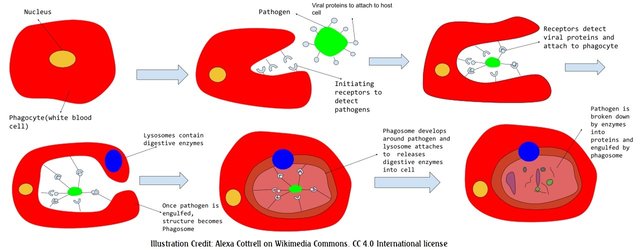
The author (Alexa Cottrell] of this illustration offers a summary of the action: An invading microorganism is detected; a phagocyte surrounds and engulfs it; digestive enzymes are released; the pathogen is destroyed.
Complement Complex : Stalwart Sentinels in the Immune System
Another brigade in our immune army is comprised of the complement complex. Circulating throughout our bodies all the time are proteins that stand ready to defend when we are threatened by something perceived as foreign. (Self vs. nonself)
The complement complex is designed to be activated only when needed. The proteins perform in cascading coordination. One of their jobs is to launch a direct assault on an enemy. The proteins can become a kind of A Team in a membrane attack complex--MAC: A pathogen is targeted; the pathogen's surface membrane is compromised by cooperation between four complement components (C5,C6,C7, and C8); and a fifth complement (C9) moves in to deliver a lethal blow. Watch this YouTube video by JohnArt to see a dramatization of a MAC assault.
Diagram of Membrane Attack Complex in Action
SLiva2016%201.2%20license.jpg)
This diagram, by SLiva2016 (CC 1.2 license), shows complement complex proteins C5, C6, C7, C8, and C9 as they attack the surface membrane of a microorganism. The first four create the environment for C9 to open a pore and introduce bactericide.
Inflammation and Trash Clearance
Two more activities of the immune system are, promote inflammation and clear away debris. Inflammation serves an important function because it alerts different elements in the system that there's danger and they have to come to the aid of imperiled tissue. Also, debris--bits and pieces left around, including killed pathogens--has to be removed or it will endanger healthy tissue.
The Immune System: A Double-Edged Sword
The Immune system can hurt us.
Anyone who has ever had an allergic reaction, has experienced the immune system overreacting to a substance. And most of us know someone who is dealing with an autoimmune disorder--diabetes, rheumatoid arthritis, multiple sclerosis, (schizophrenia?), COPD--the list is endless. When people are stricken by one of these diseases, the immune system becomes their enemy, not their friend.
The complement complex plays a significant role in aberrant immune system behavior.
The Membrane Attack Complex (MAC) in Multiple Sclerosis
Immune Cells Attack Healthy Nerve Tissue in MS

Image Credit: Adapted from a diagram by BruceBlaus on Wikimedia Commons. Used under CC 4.0 license
Autoimmune disorders present a dilemma to treating physicians and patients: how to stop the immune system's damaging activity without compromising its essential defensive function. Meeting this challenge may explain why one of the most expensive medicines in the world, Eculizumab, is designed to combat an autoimmune disease: multiple sclerosis (Eculizumab also is used to treat other autoimmune diseases). The list price for this medicine is about $500,000 a year--though that price varies by country.
Eculizumab Attaching to Complement C5
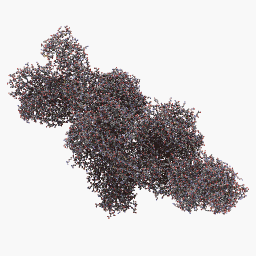
GIFCredit:Campylobacter on Wikimedia Commons CC 4.0 international license
By attaching to C5 Eculizumab prevents the complement cascade from going forward--it stops the Membrane Attack Complex from being inflicted on healthy tissue. However, use of the drug does carry with it an increased risk of serious, possibly life-threatening infection.
Bitten by a Coral Snake? The Complement Complex May Kill You
The Membrane Attack Complex is a thing of beauty, but complement complex is a fickle friend. Note the case of snake bite, described below.
Micrurus fulvius, Eastern Coral Snake, Jacksonville, FL
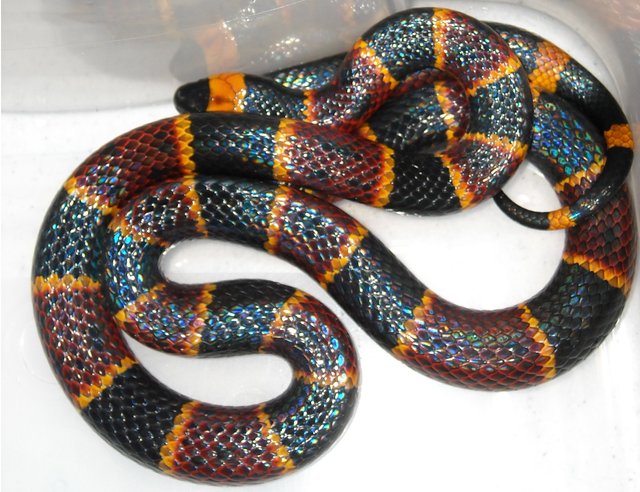
Image: Norman.benton 3.0 Unported license
According to BMC Immunology, if you are bitten by a coral snake, the venom from the snake may activate the complement complex. Instead of coming to your rescue, as would be the case in MAC, the complement cascade will generate a "significant amount of anaphylatoxins". These toxins will aid in the spread of venom throughout your system, and the effects may be fatal.
Cancer: Another Example of the Double-Edged Sword
The immune system may identify, target and destroy cancer cells. Paradoxically, a number of studies have demonstrated that activation of the complement complex in the presence of cancer, may actually promote tumor growth. A 2012 article in Journal of Clinical Investigation describes studies that show the complement complex induces inflammation, which in turn promotes tumor growth.
Systemic Lupus and Its Relationship to the Complement Complex, Especially C4
Ferdinand Marcos (1917-1989), Ronald Reagan and Imelda Marcos, 1982

Image by U. S. government employee. Public domain
Ferdinand Marcos fought systemic lupus for many years and died of the disorder in a Hawaii hospital.
I began this blog by talking about Queen Anne and the suggestion that she might have had systemic lupus. Historians and physicians guess this might have been the case because of the constellation of symptoms she evinced. These included not only trouble with blushing, but also many failed pregnancies, dropsy, gout, hemorrhage and stroke It is a patently frustrating exercise to try and diagnose an illness three hundred years after someone has died. With regard to lupus, however, the exercise is almost as frustrating when it is conducted in the present.
There exists no single lupus test. Usually, a diagnosis is made by observing symptoms and by performing a series of agreed upon laboratory tests. One of these tests is to assess complement levels, It turns out that a particular complement, C4, is associated with lupus--and a number of autoimmune diseases.
Chart of Some Autoimmune Diseases and C4 Association
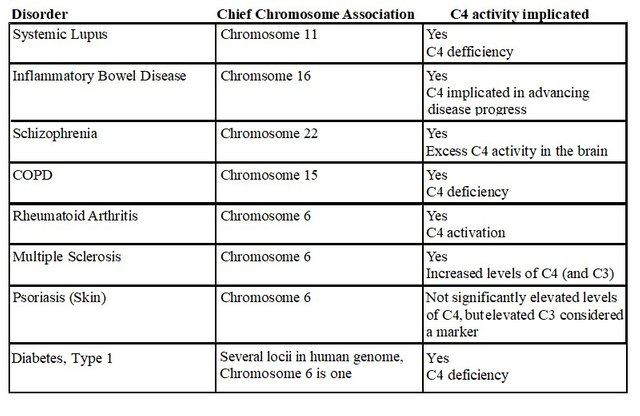
My chart, assembled from sources listed at the end of this blog. Anybody can use the chart for any reason.
One of the reasons I included chromosome association is because autoimmunity often has a genetic link, though perhaps not a genetic cause. It's interesting that C4 itself is located on Chromosme 6, which seems to pop up in a lot of the associations on the chart.
Take Out the Trash!
Somewhere in the middle of this blog I mentioned that the immune system is charged with housekeeping, with removing debris. A lot of this debris is dead cells, some of these killed through trauma, some that die naturally.
Scheduled cell death is called apoptosis. According to an article in Frontiers in Autoimmunity, Clearance Deficiency and Cell Death Pathways: A Model for the Pathogenesis of SLE: "Defects in the clearance of apoptotic cells may be responsible for the initiation of systemic autoimmunity in several chronic inflammatory diseases, including systemic lupus erythematosus (SLE)". The article explains that C4 plays an important role in clearing apoptotic cells. Therefore, low levels of C4 may contribute to the accumulation of the debris and may consequently promote the inflammatory disease process.
Apoptosis Diagram
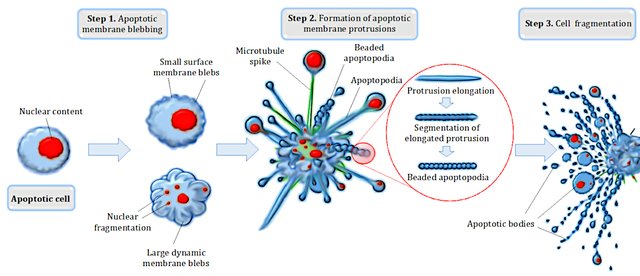
Conclusion
Dear readers, I've taken you down a long and somewhat circuitous path through the ups and downs of the immune system. This might seem dull, but the information is really important, because we all may be touched by an aberration in the immune system. In my own family we have rheumatoid arthritis, systemic lupus, pemphigus, diabetes, autoimmune encephalitis, COPD, psoriatic arthritis and more allergies than I can count. So I'm interested in how autoimmune diseases come about.
Information is power. When someone in my family goes to a doctor, I'd like to understand why a course of treatment is recommended--and to perhaps take part in a treatment plan. I hope this information might be helpful to you if you find yourself in a similar situation.

Thank your for reading my blog and spending your valuable time with me

Steem on!

Some Sources Used in Writing This Blog
1.Mayo Clinic https://www.mayoclinic.org/diseases-conditions/lupus/symptoms-causes/syc-20365789
2;Biblio.com Flannery O'Connor https://www.biblio.com/flannery-oconnor/author/1780
3.NIH.gov https://www.ncbi.nlm.nih.gov/pmc/articles/PMC5565217/
4.ScienceLearn.org.nz https://www.sciencelearn.org.nz/resources/177-the-body-s-first-line-of-defence
5.Britannica.com: Mucous Membrane https://www.britannica.com/science/mucous-membrane
6.Alex Cotrell: Phagocytosis
7.Apellis.com https://www.apellis.com/focus-science.html
8.Merck Manual https://www.merckmanuals.com/home/immune-disorders/biology-of-the-immune-system/overview-of-the-immune-system
9.Science Direct https://www.sciencedirect.com/topics/biochemistry-genetics-and-molecular-biology/complement-membrane-attack-complex
10.MAC https://www.youtube.com/watch?_fdPaBBPic
11.Embopress https://www.embopress.org/doi/full/10.15252/embj.201899852
12.Live Science https://www.livescience.com/52344-inflammation.html
13.Cell.com https://www.cell.com/fulltext/S0092-8674(10)00129-7
14.Frontiers in Psychiatry https://www.ncbi.nlm.nih.gov/pmc/articles/PMC6435494/
15.Eculizumab https://www.drugbank.ca/drugs/DB01257
16.Centers for Biosimilars.com https://www.centerforbiosimilars.com/news/alexions-second-c5-complement-inhibitor-requires-less-frequent-dosing-carries-new-p
17.Current Opinions in Infectious Disease https://www.ncbi.nlm.nih.gov/pubmed/27257797
18.BMC Immunology https://www.ncbi.nlm.nih.gov/pmc/articles/PMC3398285/
19.Cancer Research UK.org https://www.cancerresearchuk.org/about-cancer/what-is-cancer/body-systems-and-cancer/the-immune-system-and-cancer
20.https://cancerres.aacrjournals.org/content/79/13_Supplement/2334
21.The Journal of Clinical Investigation https://dm5migu4zj3pb.cloudfront.net/manuscripts/90000/90962/JCI90962.v1.pdf
22.Washington Post: Ferdinand Marcos https://www.washingtonpost.com/archive/politics/1989/09/29/ferdinand-marcos-dies-in-hawaii-at-72/d1c26275-d9bd-4bfd-8934-c2a02ff4ab51/
23.BMJ: Medicine and History https://europepmc.org/backend/ptpmcrender.fcgi?accid=PMC1882031&blobtype=pdf
24.FASEB Journal:Queen Anne's Lupus: Phospholipids and the Course of the Empire
https://www.fasebj.org/doi/abs/10.1096/fj.14-0401ufm?journalCode=fasebj
25.Bentham Open: The Open Rheumatology Journal https://www.ncbi.nlm.nih.gov/pmc/articles/PMC5101629/
26.Arthritis Research: Complement and Systemic Lupus Erythematosus https://www.ncbi.nlm.nih.gov/pmc/articles/PMC3240161/
27.Frontiers in Autoimmunity https://www.ncbi.nlm.nih.gov/pmc/articles/PMC4745266/
28.Journal of Venomous Animals and Toxins including Tropical Diseases http://www.scielo.br/scielo.php?script=sci_arttext&pid=S1678-91992015000100336
29.Journal of Venomous Animals and Toxins including Tropical Diseaseshttp://www.scielo.br/scielo.php?script=sci_arttext&pid=S1678-91992011000200003
30.Journal of Venomous Animals and Toxins including Tropical Diseases http://www.scielo.br/scielo.php?script=sci_arttext&pid=S1678-91992009000100002
31.Journal of Venomous Animals and Toxins including Tropical Diseases https://www.ncbi.nlm.nih.gov/pmc/articles/PMC5831611/
32.Juvenile diabetes C4 deficiency https://www.pacificejournals.com/journal/index.php/aabs/article/view/aabs661
33.Juvenile diabetes genetics https://www.ncbi.nlm.nih.gov/books/NBK22256/
34.NCBI Resources: https://www.ncbi.nlm.nih.gov/gene/720
34.Frontiers in Immunology https://www.ncbi.nlm.nih.gov/pmc/articles/PMC6737392/
35.Table of Autoimmune Diseases, with Resources (by me)

Originally posted here: https://steemit.com/steemstem/@agmoore2/the-immune-system-yo-1574443987
No comments:
Post a Comment